Imagine stepping into your backyard and being surrounded by the vibrant colors and gentle flutter of butterflies. Creating a butterfly garden is a delightful way to bring life and beauty to your outdoor space while supporting local ecosystems. By incorporating the right butterfly plant species, you can attract these beautiful creatures and create a thriving pollinator garden that supports a healthy ecosystem.
With a little planning and creativity, you can turn your outdoor space into a haven for butterflies and other beneficial insects. Native plants, such as milkweed and coneflower, are essential for attracting local butterfly species and providing them with the necessary food and shelter. By choosing the right plants and creating a butterfly-friendly habitat, you can attract a variety of butterfly species and enjoy the beauty and wonder of these creatures up close.
Table of Contents
Why Choose Butterfly Plants for Your Garden?
When it comes to creating a beautiful and thriving garden, choosing the right plants is essential. Butterfly-friendly flowers and native plant species are perfect for attracting these delicate creatures to your outdoor space. One of the most popular options is the milkweed plant, which is a vital food source for monarch butterflies.

In addition to their beauty, butterfly plants also provide numerous benefits for local ecosystems. By incorporating native plant species into your garden, you can help support the local wildlife and create a haven for butterflies and other pollinators. Some examples of butterfly-friendly flowers include milkweed, coneflower, and lantana.
Here are some benefits of choosing butterfly plants for your garden:
- Attract a variety of butterfly species
- Support local ecosystems and wildlife
- Add beauty and color to your garden
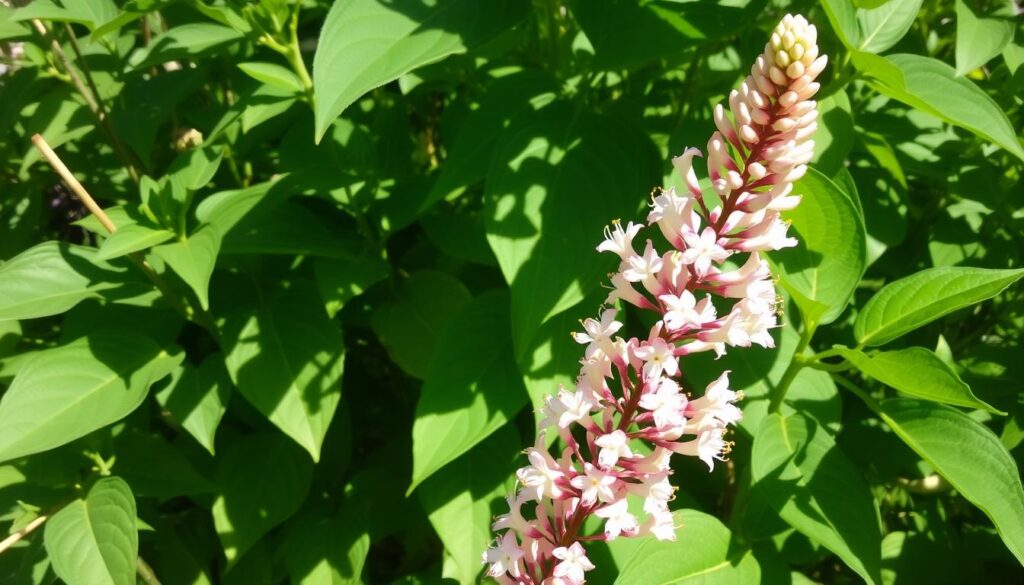
By incorporating milkweed plant and other butterfly-friendly flowers into your garden, you can create a thriving ecosystem that supports local wildlife and adds beauty to your outdoor space.
| Plant | Benefits |
|---|---|
| Milkweed | Food source for monarch butterflies |
| Coneflower | Attracts a variety of butterfly species |
| Lantana | Provides nectar for butterflies and other pollinators |
Popular Butterfly Plant Varieties
When creating a garden for butterflies, it’s essential to choose the right plants that will attract these beautiful creatures. Butterfly host plants, such as milkweed, coneflower, and lantana, are perfect for a pollinator garden. These plants provide a source of food and shelter for butterflies, making them an ideal choice for any butterfly enthusiast.
In a pollinator garden, you can include a variety of plants that will attract different species of butterflies. For example, milkweed is a popular choice because it’s a host plant for monarch butterflies. Coneflower, on the other hand, is a vibrant staple that will attract a range of butterfly species. Lantana is another great option, with its bright blooms that will attract butterflies and other pollinators.
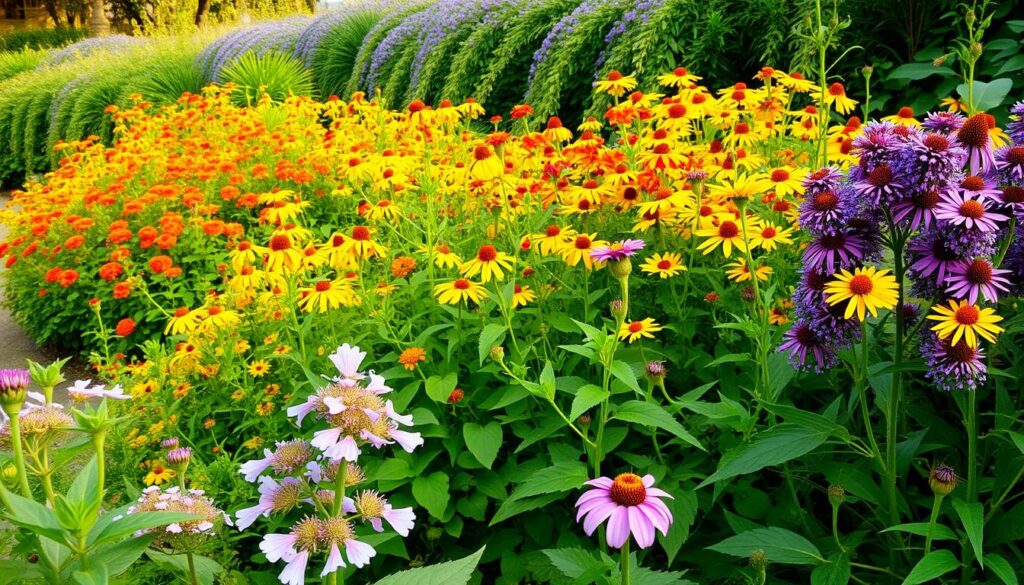
- Milkweed: a host plant for monarch butterflies
- Coneflower: a vibrant staple that will attract a range of butterfly species
- Lantana: a bright and colorful plant that will attract butterflies and other pollinators
By incorporating these plants into your garden for butterflies, you’ll be creating a haven for these beautiful creatures and supporting the local ecosystem.
Ideal Growing Conditions for Butterfly Plants
When it comes to creating a thriving garden that will attract butterflies, it’s essential to provide the right growing conditions for your butterfly plant. This includes choosing a location with the right amount of sunlight, soil that drains well, and a watering schedule that meets the plant’s needs. By understanding the specific requirements of your butterfly plant, you can create a garden that is tailored to its needs and will attract a variety of butterfly species.
To attract butterflies, you’ll want to choose a location that receives at least six hours of direct sunlight per day. Butterfly plants, such as the butterfly bush, require full sun to produce an abundance of nectar-rich flowers that will attract butterflies. Additionally, well-drained soil is crucial for the health and survival of your butterfly plant. You can achieve this by planting your butterfly plant in a location with sandy soil or by adding organic matter to your soil to improve its drainage.
Native plant species, such as the butterfly weed, are also an excellent choice for attracting butterflies. These plants have evolved to thrive in local conditions and will require less maintenance than non-native species. By choosing native plant species and providing the right growing conditions, you can create a thriving garden that will attract a variety of butterfly species and provide a beautiful display of color and life.
Some key things to keep in mind when creating a butterfly garden include:
- Planting a variety of nectar-rich flowers that will attract butterflies
- Choosing plants that are native to your area and will thrive in local conditions
- Providing a source of water, such as a shallow dish or birdbath, for butterflies to drink from
By following these tips and providing the right growing conditions for your butterfly plant, you can create a beautiful and thriving garden that will attract a variety of butterfly species and provide a fun and educational experience for you and your family.
How to Create a Butterfly-Friendly Habitat
To create a pollinator garden that attracts butterflies, you should consider several key factors. Choosing the right location is crucial, as butterflies require between 6 to 8 hours of full sun to thrive. When selecting plants for your garden for butterflies, opt for nectar-rich flowers that are brightly colored with shallow blossoms, such as aster flowers, which are significant nectar sources for migrating butterflies.
A butterfly-friendly habitat should include both nectar and host plants to sustain multiple generations of butterflies. For example, monarch butterflies exclusively feed on milkweeds, including butterfly weed. Other host plants, such as spicebush and sassafras trees, are essential for the Spicebush Swallowtail’s caterpillars. By incorporating a mix of annuals and perennials, you can prolong blooming times throughout the growing season and attract a variety of butterfly species.
Companion Planting Techniques
Companion planting is a technique that involves planting multiple plants together to enhance their growth and attractiveness to butterflies. Some examples of companion planting include:
- Planting nectar-rich flowers in groups to attract butterflies
- Using host plants, such as milkweed, to support monarch butterfly caterpillars
- Incorporating plants with shallow blossoms, such as coneflower, to provide easy access to nectar
Providing Shelter and Resources
In addition to providing the right plants, it’s essential to create a welcoming environment for butterflies. This can include providing shallow puddles for drinking water and mineral acquisition, as well as creating a rocky or muddy area for butterflies to congregate. By creating a butterfly-friendly habitat, you can attract a variety of species and support the local ecosystem.
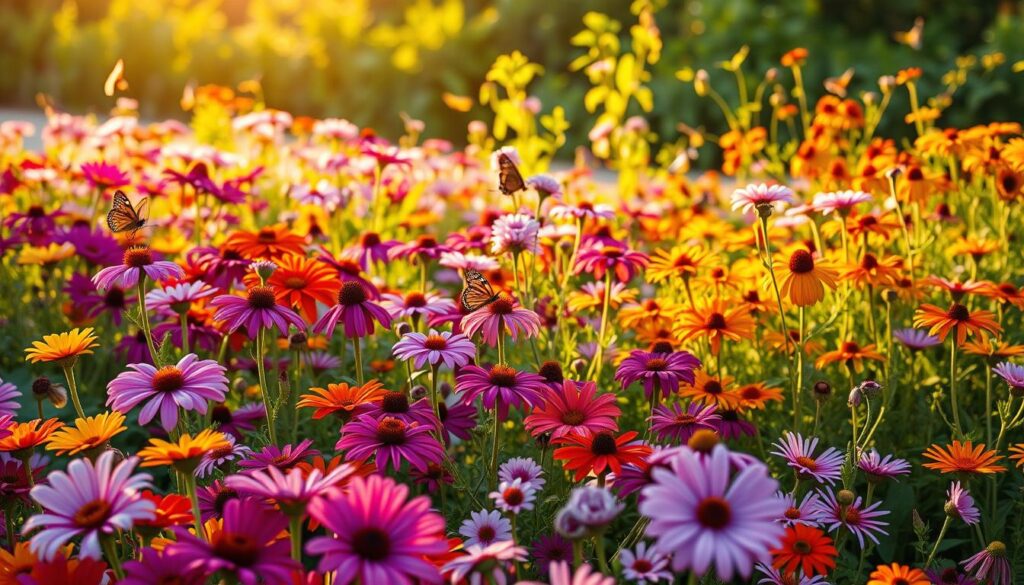
| Flower | Butterfly Species |
|---|---|
| Aster | Migrating butterflies |
| Milkweed | Monarch butterflies |
| Spicebush | Spicebush Swallowtail |
Caring for Your Butterfly Plants
To keep your butterfly plant thriving, it’s essential to provide the right conditions. Native plant species like the butterfly bush (Buddleia davidii) require full sun exposure of at least six hours daily and well-draining soil with a pH between 6.0 and 7.0. Watering should be done carefully, providing about 1/2 inch of water per week from rain or irrigation.
When it comes to fertilization, a balanced granular fertilizer can be used in the spring, following the label directions. However, if you’re growing your butterfly plant in organic compost, fertilization might not be necessary. Pruning is also crucial, as it enhances growth and blooming, particularly in warmer regions. By following these tips, you can create a beautiful and sustainable garden that will attract butterflies and support the local ecosystem.
Some additional tips for caring for your butterfly plants include:
* Planting them in areas with good air circulation to prevent disease
* Deadheading spent flowers to encourage more blooming
* Providing shelter and resources, like a butterfly house or a nectar feeder, to attract more butterflies and support their life cycle
* Using natural and organic methods to manage pests and diseases, rather than relying on chemical pesticides or fertilizers.
| Plant Type | Soil pH | Watering Needs | Fertilization |
|---|---|---|---|
| Butterfly Bush (Buddleia davidii) | 6.0-7.0 | 1/2 inch per week | Balanced granular fertilizer in spring |
Seasonal Planting Calendar for Butterfly Flowers
When creating a pollinator garden or a garden for butterflies, it’s essential to consider the seasonal planting calendar for butterfly-friendly flowers. This will ensure that your garden provides a constant source of food and shelter for local butterfly species throughout the year.
To get started, you’ll need to determine the best times to plant different types of flowers. Here are some general guidelines:
- Perennials: 8 to 10 weeks before the last frost date
- Annuals: 6 to 8 weeks before the last frost date
- Bulbs: in the fall for spring-flowering varieties, or in the spring for summer-flowering varieties
Some examples of butterfly-friendly flowers and their planting times include:
| Flower | Planting Time |
|---|---|
| Anise hyssop | After the last frost date |
| Catmint | After the last frost date |
| Coneflower | 10 to 12 weeks before planting outdoors |
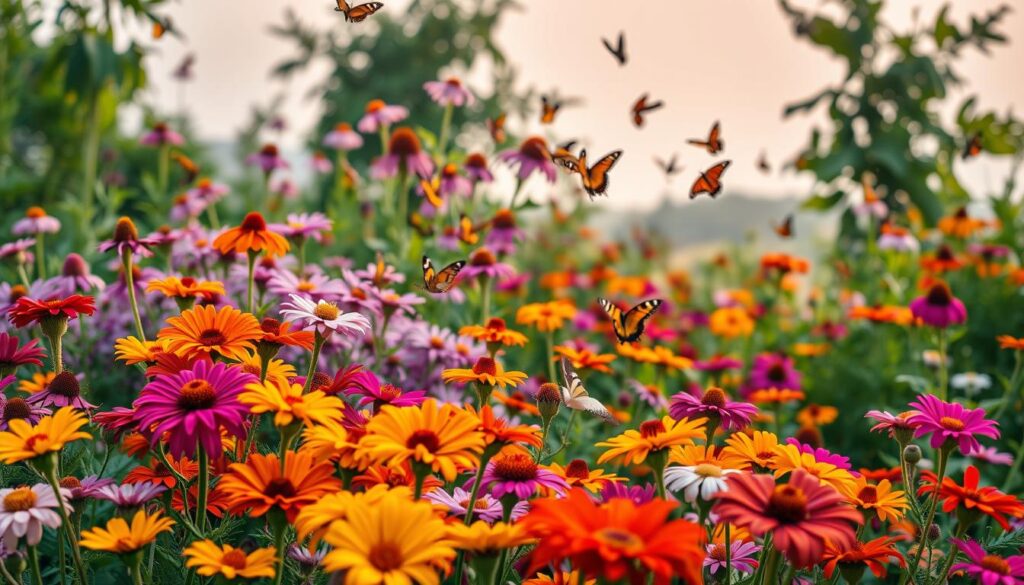
By following this seasonal planting calendar, you can create a thriving pollinator garden or garden for butterflies that will attract and support local butterfly species throughout the year.
Designing Your Outdoor Space with Butterfly Plants
When designing your outdoor space with butterfly plants, it’s essential to consider the overall aesthetic and functionality of the area. To attract butterflies, you’ll want to incorporate a variety of native plant species that provide nectar and host plants for caterpillars. A well-designed butterfly garden can be a beautiful and tranquil oasis, perfect for relaxing and enjoying nature.
To create a stunning butterfly garden, start by arranging plants for impact. Choose a mix of plants with different heights, textures, and bloom times to create a dynamic and interesting landscape. Consider incorporating pathways and seating areas to invite visitors to linger and enjoy the garden. You can also create focal points, such as a statement piece of art or a beautiful butterfly-friendly plant, to draw the eye and add visual interest.
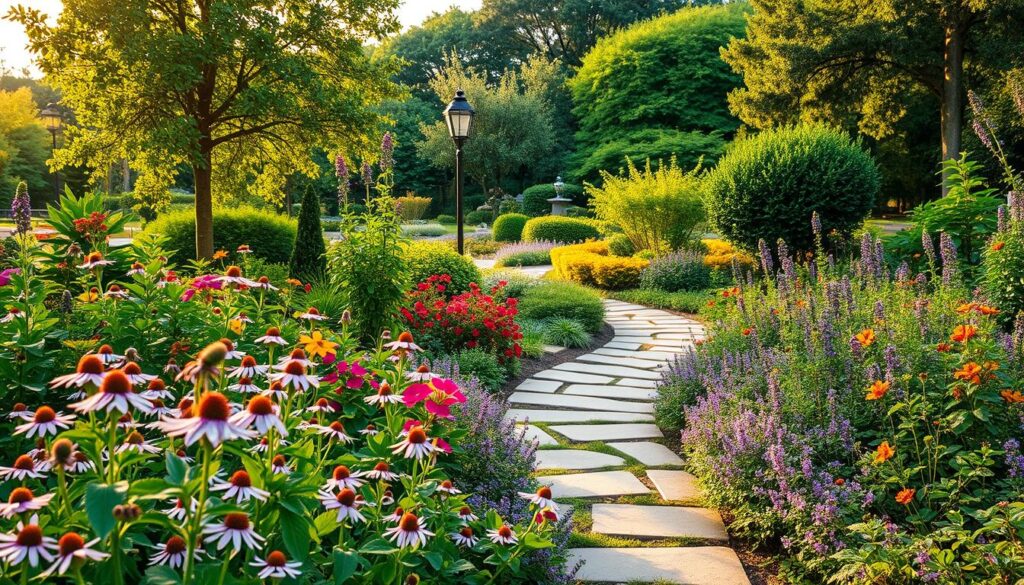
Some popular butterfly plants to consider include milkweed, coneflower, and lantana. These plants are not only beautiful, but they also provide a source of food and shelter for butterflies. By incorporating these plants into your garden design, you can create a welcoming space for butterflies and other pollinators.
Here are some tips for designing your outdoor space with butterfly plants:
- Choose native plant species that are suitable for your region and climate.
- Incorporate a variety of plants with different bloom times to provide a constant source of nectar.
- Consider adding a water feature, such as a shallow dish or birdbath, to provide a source of water for butterflies.
- Avoid using pesticides and herbicides, which can harm butterflies and other pollinators.
| Plant | Bloom Time | Height |
|---|---|---|
| Milkweed | Summer | 2-3 feet |
| Coneflower | Summer | 3-4 feet |
| Lantana | Summer | 3-6 feet |
By following these tips and incorporating butterfly-friendly plants into your garden design, you can create a beautiful and functional outdoor space that attracts butterflies and other pollinators. Remember to choose native plant species, incorporate a variety of plants with different bloom times, and avoid using pesticides and herbicides. With a little planning and creativity, you can create a stunning butterfly garden that will provide hours of enjoyment and relaxation.
DIY Butterfly Garden Projects
Creating a pollinator garden or a garden for butterflies can be a fun and rewarding experience. By incorporating butterfly-friendly flowers and DIY projects, you can attract a variety of butterfly species to your outdoor space. One idea is to build a butterfly house, which can provide a safe haven for butterflies to roost and hide from predators.
Another DIY project is to craft a homemade nectar feeder. This can be as simple as filling a jar with a sugar-water solution and hanging it from a tree. You can also add decorative features, such as a hand-painted ceramic feeder or a natural fiber rope hanger. These small touches can make your garden for butterflies truly unique and inviting.
Some popular DIY projects for a pollinator garden include:
- Building a butterfly house or shelter
- Crafting a homemade nectar feeder
- Creating a butterfly-friendly flower bed
- Adding decorative features, such as a sundial or a birdbath
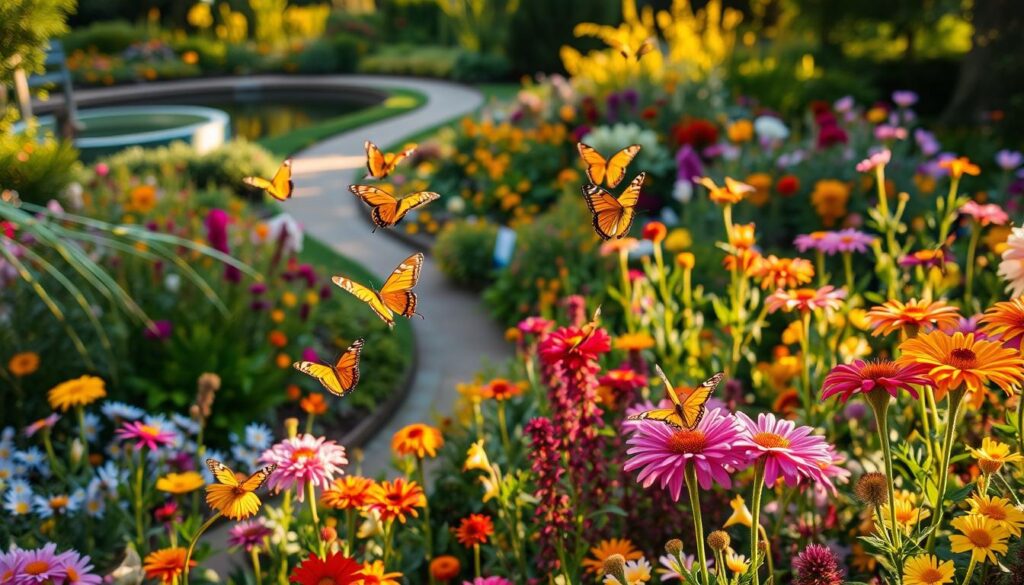
By incorporating these DIY projects into your garden, you can create a thriving and attractive space that supports local pollinators and provides a welcoming habitat for butterflies.
| Project | Materials Needed | Difficulty Level |
|---|---|---|
| Butterfly House | Wood, nails, hammer | Easy |
| Nectar Feeder | Jar, sugar, water, rope | Easy |
| Butterfly-Friendly Flower Bed | Seeds, soil, gardening tools | Medium |
Resources for Butterfly Garden Enthusiasts
As you embark on your journey to create a thriving butterfly garden, you’ll find a wealth of resources to support your efforts. By tapping into local gardening clubs and communities, you can connect with experienced practitioners and share your own insights. Online forums and information hubs offer a treasure trove of up-to-date tips, research, and discussions on the latest trends in butterfly-friendly landscaping. Additionally, reading materials and guides, both online and in print, can deepen your understanding of native butterfly plant species, seasonal care, and effective design strategies.
With these resources at your fingertips, you’ll be empowered to create a butterfly-attracting oasis that supports local ecosystems and attracts a diverse array of these captivating pollinators. Whether you’re a seasoned gardener or just starting out, the insights and inspiration you’ll find in these communities and publications will prove invaluable in your quest to cultivate a native plant paradise that truly celebrates the beauty and importance of butterflies.
FAQ
What are the benefits of choosing butterfly plants for my garden?
Choosing butterfly plants for your garden can benefit local ecosystems, provide visual appeal and color, and attract diverse wildlife such as butterflies, moths, and other pollinators.
What are some popular butterfly plant varieties I should consider?
Some popular butterfly plant varieties include milkweed, coneflower, and lantana. These plants are known for their ability to attract specific butterfly species and create a thriving pollinator garden.
What are the ideal growing conditions for butterfly plants?
Butterfly plants have specific soil requirements, sunlight needs, and watering and drainage preferences. Understanding these conditions can help you create a thriving garden that meets the needs of your butterfly plants.
How can I create a butterfly-friendly habitat in my garden?
To create a butterfly-friendly habitat, you should choose the right location, use companion planting techniques, and provide shelter and resources for butterflies and other pollinators.
How do I care for my butterfly plants?
Caring for your butterfly plants involves following seasonal maintenance tips, implementing natural pest management solutions, and using the right fertilization guidelines to ensure they thrive and continue to attract butterflies.
When is the best time to plant butterfly-friendly flowers?
The best time to plant butterfly-friendly flowers depends on their seasonal blooming patterns. Understanding the seasonal planting calendar can help you create a garden that provides a constant source of food and shelter for local butterfly species.
How can I design my outdoor space to attract more butterflies?
You can design your outdoor space to attract more butterflies by arranging plants for maximum impact, incorporating pathways and seating, and creating focal points that draw butterflies to your garden.
What DIY projects can I do to enhance my butterfly garden?
You can create DIY projects such as building a butterfly house, crafting a homemade nectar feeder, and adding decorative features to your garden to make it more attractive and welcoming to butterflies.
Where can I find resources to help me become a better butterfly gardener?
You can find resources to help you become a better butterfly gardener by connecting with local gardening clubs and communities, exploring online forums and information, and reading materials and guides on butterfly gardening.
Source Links
- Top Plants for a Colorful, Butterfly-Friendly Garden – https://indorenursery.com/2024/09/23/top-butterfly-garden-plants-create-a-vibrant-butterfly-friendly-garden/
- Butterfly Garden Perennials | Bulk Orders – https://www.bloomindesigns.com/butterfly-gardens/?srsltid=AfmBOopH9FXYkEzrtyiNY0a_22CVoPjGBo9-T7QiR8lYAOOQmO69gTS9
- Butterfly Garden…”Build it and they will come” part 1 | The Gardener’s Shed – https://thegardenersshed.proboards.com/thread/6987/butterfly-garden-build-come-1
- Why You Should Plant a Butterfly Garden – https://www.wisconsinmommy.com/plant-a-butterfly-garden/
- Plant a Butterfly Garden – KidsGardening – https://kidsgardening.org/resources/garden-activities-plant-a-butterfly-garden/
- 5 Butterfly Bush (Buddleia) Varieties For Your Garden – https://butterflybushes.com/blogs/inspiration-and-information/5-butterfly-bush-varieties-buddleia?srsltid=AfmBOorRerRq87pZPDqV43oGODgbXGySrmuBk0RcRtdtOkXZlwnWv6Iq
- 25 Plants & Flowers That Attract Butterflies – Garden Design – https://www.gardendesign.com/plants/butterfly-garden.html
- Top 25 Butterfly Garden Plants – Flowers to Attract Butterflies – https://www.plantdelights.com/blogs/articles/butterfly-garden-plants-host-attract-butterflies?srsltid=AfmBOoqhB_CEyIyYIBJss1xP6-Kjy81tXP3vYlQvBeYflfIH7XmRXpx5
- Butterfly Bush – The Ultimate Care Guide – https://www.provenwinners.com/learn/how-plant/proven-winners-ultimate-guide-butterfly-bush
- How to Plant and Grow Butterfly Bushes | ButterflyBushes.com – https://butterflybushes.com/pages/how-to-plant-and-grow-butterfly-bushes?srsltid=AfmBOorVRFkqNpHN2v6vyiPpbrUqDHdTrwRStrFPo11exu5lMN_LDIYl
- Plant a Beautiful Garden Butterflies Will Love – https://www.thespruce.com/how-to-make-a-butterfly-garden-4427931
- Creating a butterfly garden – https://extension.umn.edu/landscape-design/creating-butterfly-garden
- Butterfly Bush: Plant Care & Growing Guide – https://www.thespruce.com/types-of-butterfly-bush-2132429
- How To Grow And Care For A Butterfly Bush – https://www.southernliving.com/garden/shrubs/butterfly-bush?srsltid=AfmBOoolEFoLMBZGkcPl9lawAikJh5X8Fzn4_NDLBcTb3T1vGrc0qOcw
- Butterfly Bush Planting: Tips On Caring For Butterfly Bushes – https://www.gardeningknowhow.com/ornamental/shrubs/butterfly-bush/butterfly-bush-care.htm
- When Should You Plant Flowers? Let’s Get Growing! – https://www.almanac.com/when-plant-flowers
- Our Seasonal Calendar for When to Plant Everything in Your Garden – https://www.marthastewart.com/1542187/garden-calendar-when-plant-flowers-tress-shrubs-grasses-vegetables-outside
- How to Design a Beautiful Butterfly Garden – Garden Design – https://www.gardendesign.com/landscape-design/butterfly-garden.html
- How to Create a Butterfly and Bee Garden – Within the Grove – https://withinthegrove.com/butterfly-and-bee-garden/
- Build a Butterfly Pathway Garden With These Butterfly-Friendly Plants – https://gardentherapy.ca/butterfly-pathway-garden/
- Annual and Perennial Butterfly Garden Designs – https://www.birdsandblooms.com/gardening/attracting-butterflies/butterfly-gardening-plans/?srsltid=AfmBOoq3llUaad8vE-K0mMIM8ZgHCrCGgryAAiAXVBYQUDS6oLZVbfIP
- Butterfly Gardening – Smithsonian Gardens – https://gardens.si.edu/learn/educational-resources/cultivating-habitat/butterfly-gardening/
- Butterfly Garden Resources For A Butter Garden – https://monarchbutterflygarden.net/butterfly-garden-resources/

